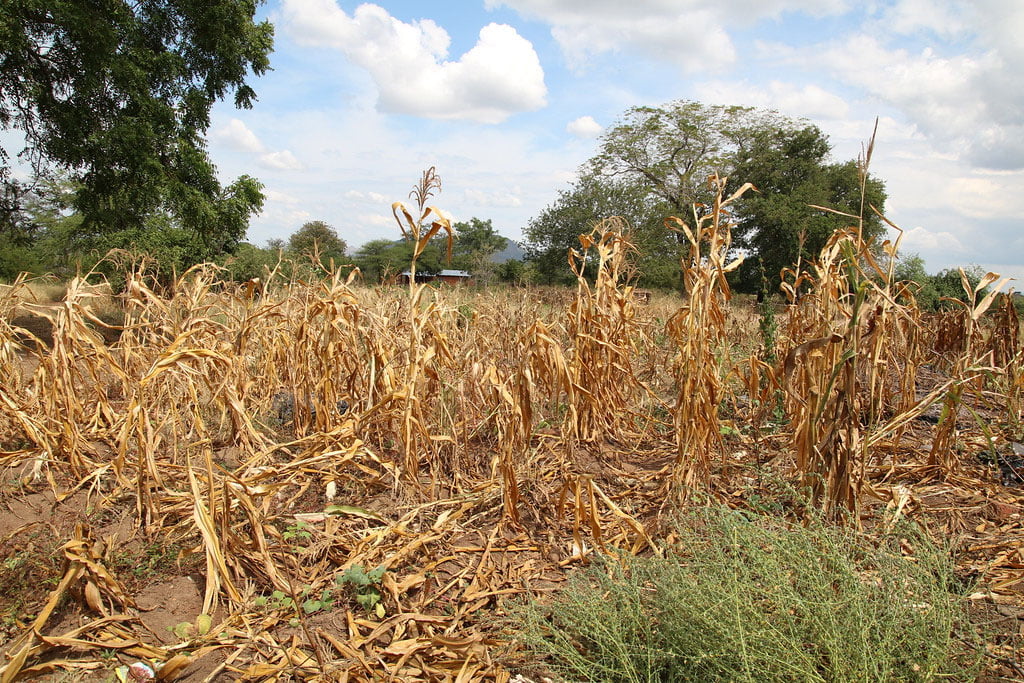
21 July 2016 – Global temperatures for the first six months of this year reached new highs, setting 2016 on track to be the hottest-ever on record, the United Nations weather agency said today.
“Another month, another record. And another. And another. Decades-long trends of climate change are reaching new climaxes, fuelled by the strong 2015/2016 El Niño,” said World Meteorological Organization (WMO) Secretary-General Petteri Taalas in a press release.
The El Niño event, which turned up the Earth’s thermostat, has now disappeared, but “climate change, caused by heat-trapping greenhouse gases, will not,” he stressed. This means more heatwaves, more extreme rainfall and potential for higher impact tropical cyclones.
Arctic sea ice melted early and fast, another indicator of climate change. Carbon dioxide levels, which are driving global warming, have reached new highs.
To calculate global temperature statistics for its annual state of the climate report, WMO uses datasets from the US National Oceanic and Atmospheric Administration (NOAA), the United States National Aeronautics and Space Administration’s Goddard Institute for Space Studies (NASA GISS), and the UK’s Met Office and reanalysis data from the European Centre for Medium Range Weather Forecasting (ECMWF).

Secretary-General Ban Ki-moon (second from left) in discussion with Petteri Talaas, Secretary-General of the World Meteorological Organization (WMO), at the WMO Headquarters in Geneva, Switzerland. UN Photo/Rick Bajornas.
Two separate reports from NOAA and NASA GISS both highlighted the dramatic and sweeping changes in the state of the climate.
June 2016 marked the 14th consecutive month of record heat for land and oceans. It marked the 378th consecutive month with temperatures above the 20th century average. The last month with temperatures below the 20th century average was December 1984.
Carbon dioxide concentrations have passed the symbolic milestone of 400 parts per million in the atmosphere so far this year. CO2 levels vary according to the season, but the underlying trend is upwards. They showed a surprising increase for the first half of 2016, rising in June 2016 to nearly 407 ppm, 4 ppm greater than June 2015.
“This underlines more starkly than ever the need to approve and implement the Paris Agreement on climate change, and to speed up the shift to low carbon economies and renewable energy,” said Mr. Taalas.

UN Secretary-General Ban Ki-moon has invited leaders to a special event on 21 September to deposit their instruments of ratification, acceptance, approval or accession to the Paris Agreement on climate change, which was adopted by last December. The event will also provide an opportunity to other countries to publicly commit to the agreement before the end of 2016.
Contents
It’s getting hotter
The average temperature in the first six months of 2016 was 1.3 degrees Celsius (2.4 degrees Fahrenheit) warmer than the pre-industrial era in the late 19th century, according to NASA.
NOAA said the global land and ocean average temperature for January–June was 1.05 degrees Celsius (1.89 degrees Fahrenheit) above the 20th century average, beating the previous record set in 2015 by 0.20 degree Celsius (0.36 degree Fahrenheit).
Each month in 2016 was record warm. Most of the world’s land and ocean surfaces had warmer to much-warmer-than-average conditions.
The El Niño event which developed in 2015 and was one of the most powerful on record contributed to the record temperatures in the first half of 2016. It dissipated in May.
Arctic Sea ice is melting faster
The extent of Arctic sea ice at the peak of the summer melt season now typically covers 40 per cent less area than it did in the late 1970s and early 1980s. Arctic sea ice extent in September, the seasonal low point in the annual cycle, has been declining at a rate of 13.4 per cent per decade.

A view from Secretary-General Ban Ki-moon’s small plane on arrival in King George Island, Antarctica. The Secretary-General traveled to Antarctica to see the effects of climate change on melting glaciers.
Depending on where you are, it’s either too wet or too dry
Rainfall in June 2016 varied significantly around the world. It was notably drier than normal across the western and central contiguous US, Spain, northern Colombia, northeastern Brazil, Chile, southern Argentina, and across parts of central Russia.
Wetter-than-normal precipitation was observed across northern Argentina, northern and central Europe, much of Australia, and across central and southern Asia.
From January to 4 July, China saw 21.2 per cent above average precipitation. South China entered the flood season on 21 March, 16 days earlier than normal and more than 150 counties were record wet, according to the China Meteorological Administration. More than 300 rivers crossed the water level warning mark.
Coral reefs are under increasing threat
Temperatures in the Coral Sea (including the Great Barrier Reef), and the Tasman Sea were highest on record for extended periods since late summer 2016, according to Australia’s Bureau of Meteorology.
These warm waters have also contributed to surface temperature warmth over Australia and unprecedented bleaching of the Great Barrier Reef, according to Australia’s independent Climate Council. There has been widespread bleaching of reefs in many other parts of the world.
[Source:- UN news centre]




